New York City Works
Jobs, Advocacy, Action
An exhibition created by LaborArts for the New York City Central Labor Council
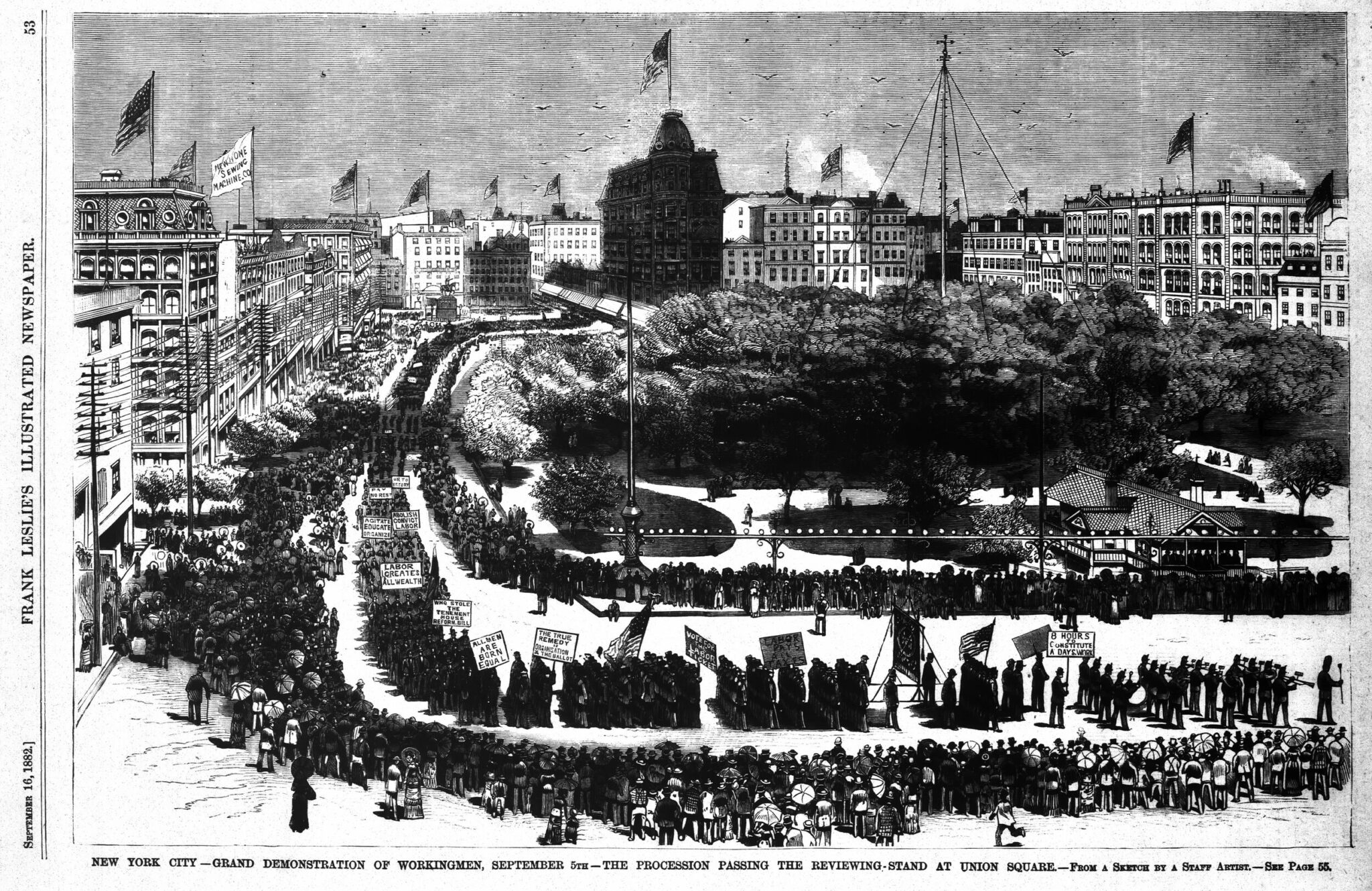
First Labor Day Parade 1882
Thirty thousand people marched in Union Square on September 5, 1882, demonstrating the solidarity of Labor Unions and workers. They demanded an eight hour workday, better treatment of immigrants, an end to child labor, and equal pay for equal work. Unfortunately, these basic demands continue to be more urgent than ever in this city which is still known as the “cradle of the modern Labor Movement.”Frank Leslies’ Illustrated, Tamiment Library, NYU
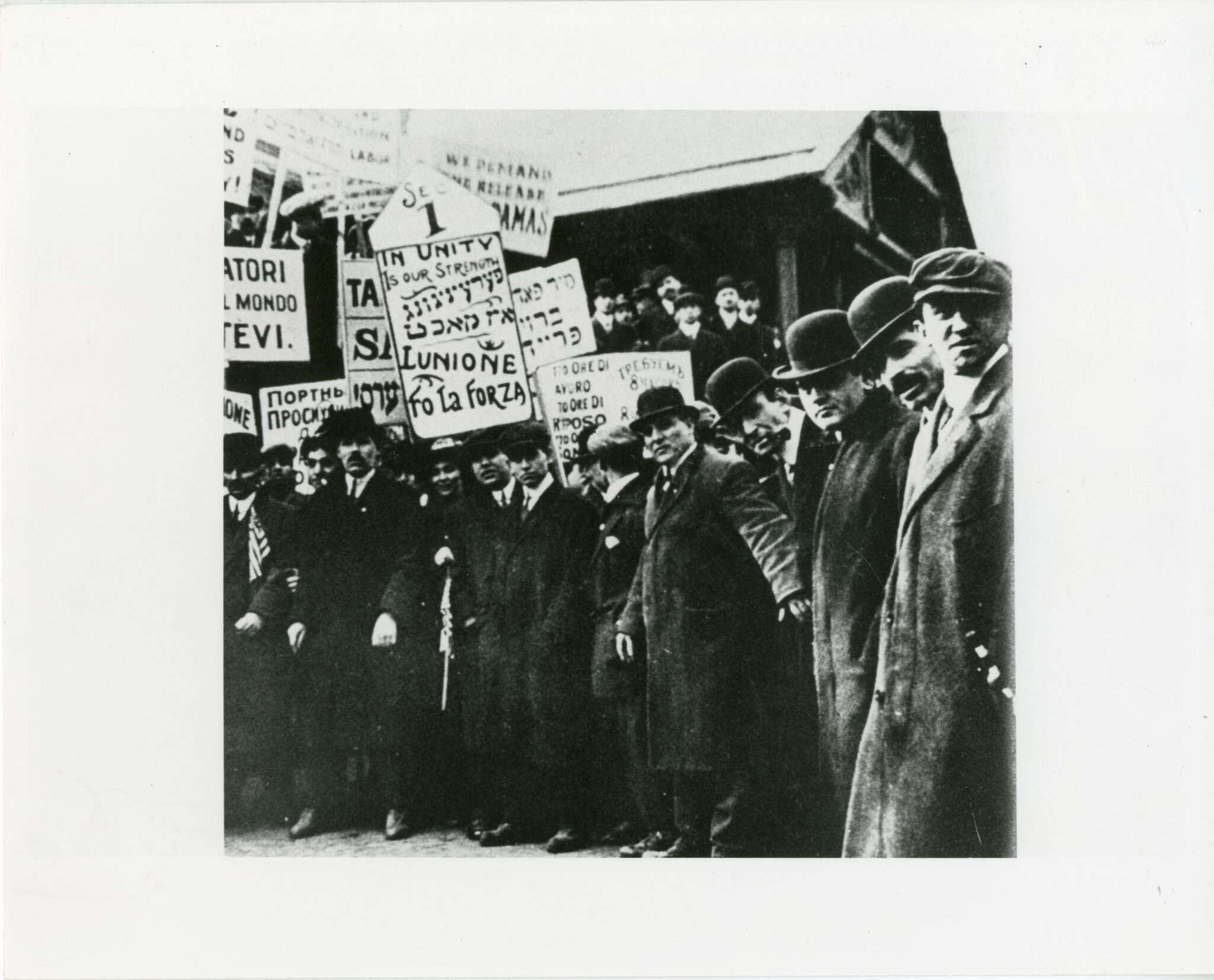
Immigrant City, Union Town circa 1909
More people, more immigrants, more union members; dominance in manufacturing and later finance; for over a century New York City has been a city of superlatives and of contrasts. Our workforce draws from racial and ethnic groups and nationalities who speak over 100 different languages. No wonder it is so often called the “cradle of the modern Labor Movement.” These garment workers carry signs in Yiddish, Italian and English proclaiming “In Unity is Our Strength!” at a rally in Union Square. Unity—mutual support—is the core of the Labor Movement, a language shared by all. ILGWU Archives, Kheel Center, Cornell University
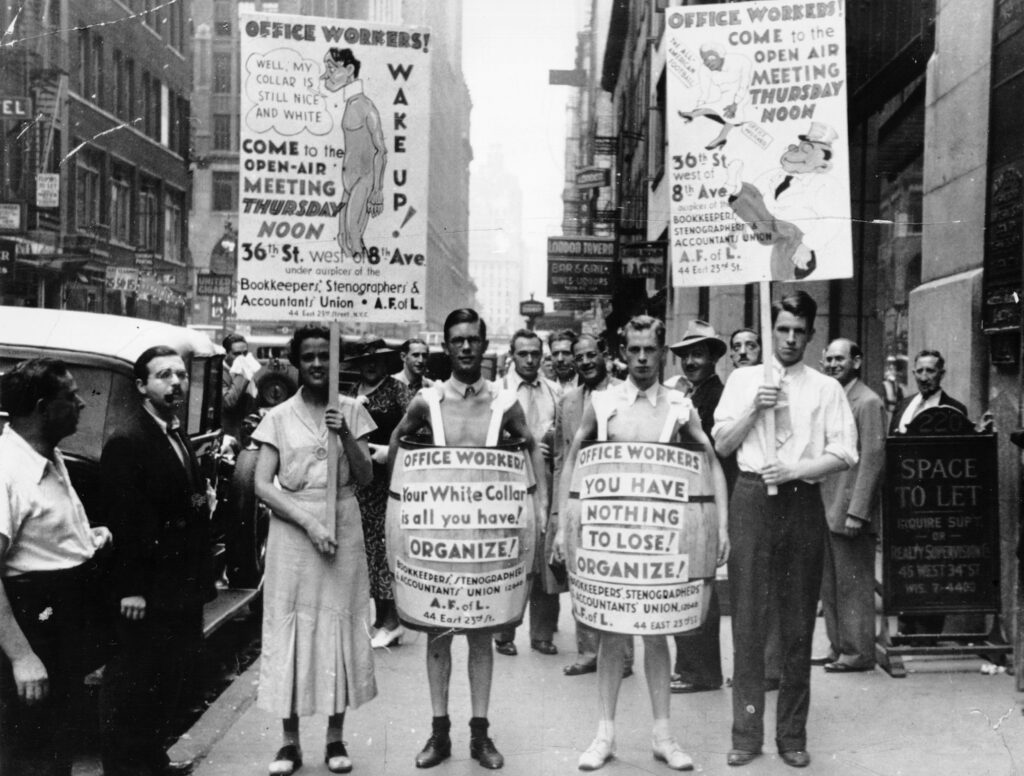
Office Workers’ Creative Organizing 1935
The Wagner Act created the National Labor Relations Board and for the first time protected the rights of workers to organize into unions. Imaginative campaigns flourished, including this demonstration by office workers, illustrating their situation - nothing to lose (but their white collars). The challenge of organizing white collar workers has not diminished in subsequent decades.Union Label collection, Robert F. Wagner Labor Archives, New York University
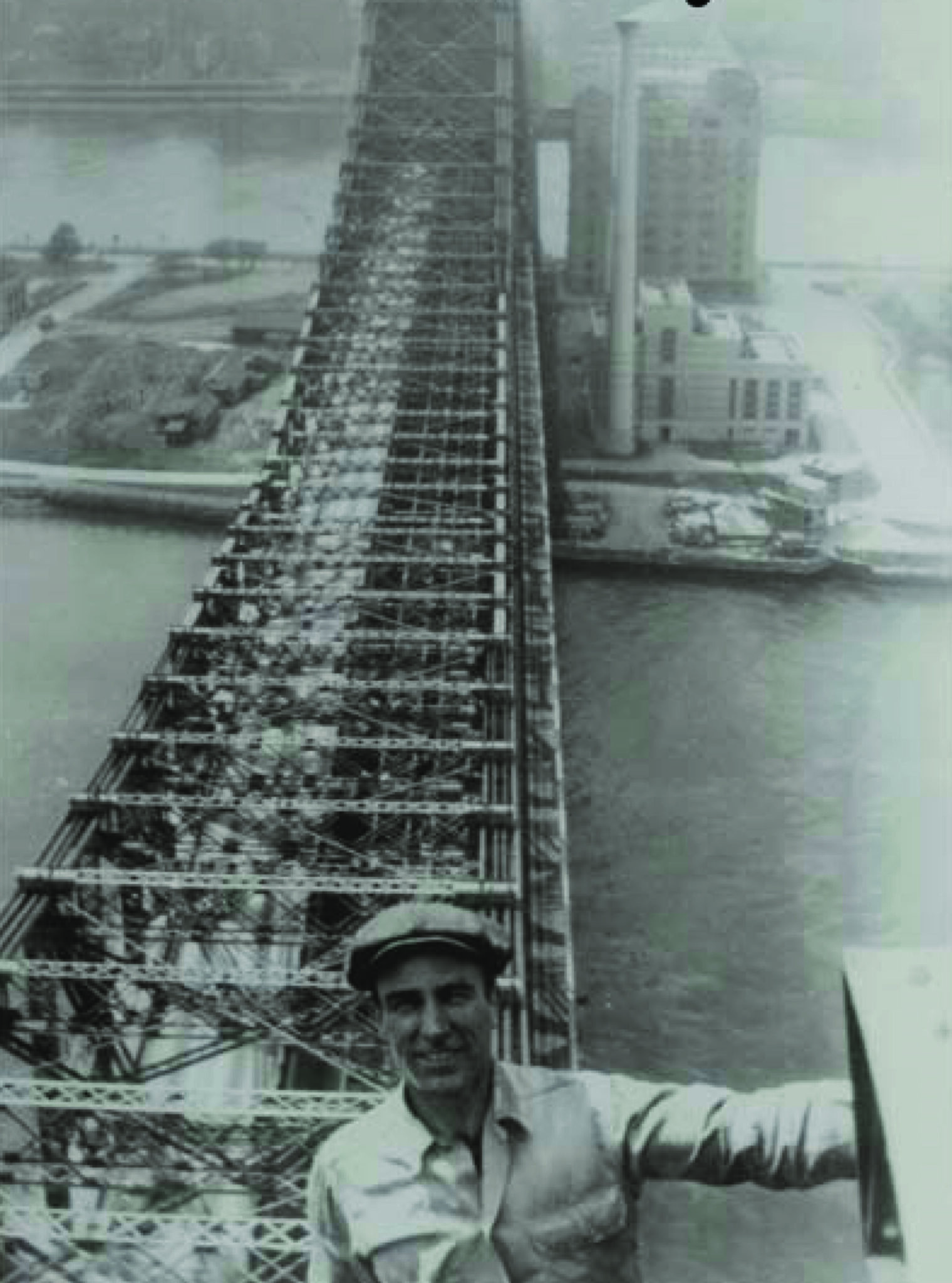
Risking Life and Limb for NYC 1949
A bridgepainter on the Queensboro Fifty-ninth Street Bridge, Phillip Keating, the son of Irish immigrants, fell to his death while painting another bridge seven years after a fellow worker snapped this shot. Despite union and government efforts at improving safety on the job, construction workers remain at great risk. Recent statistics show that though they make up 5% of NYC’s total workforce, they account for 27% of work-related injury fatalities—most of them on non-union worksites.Private collection
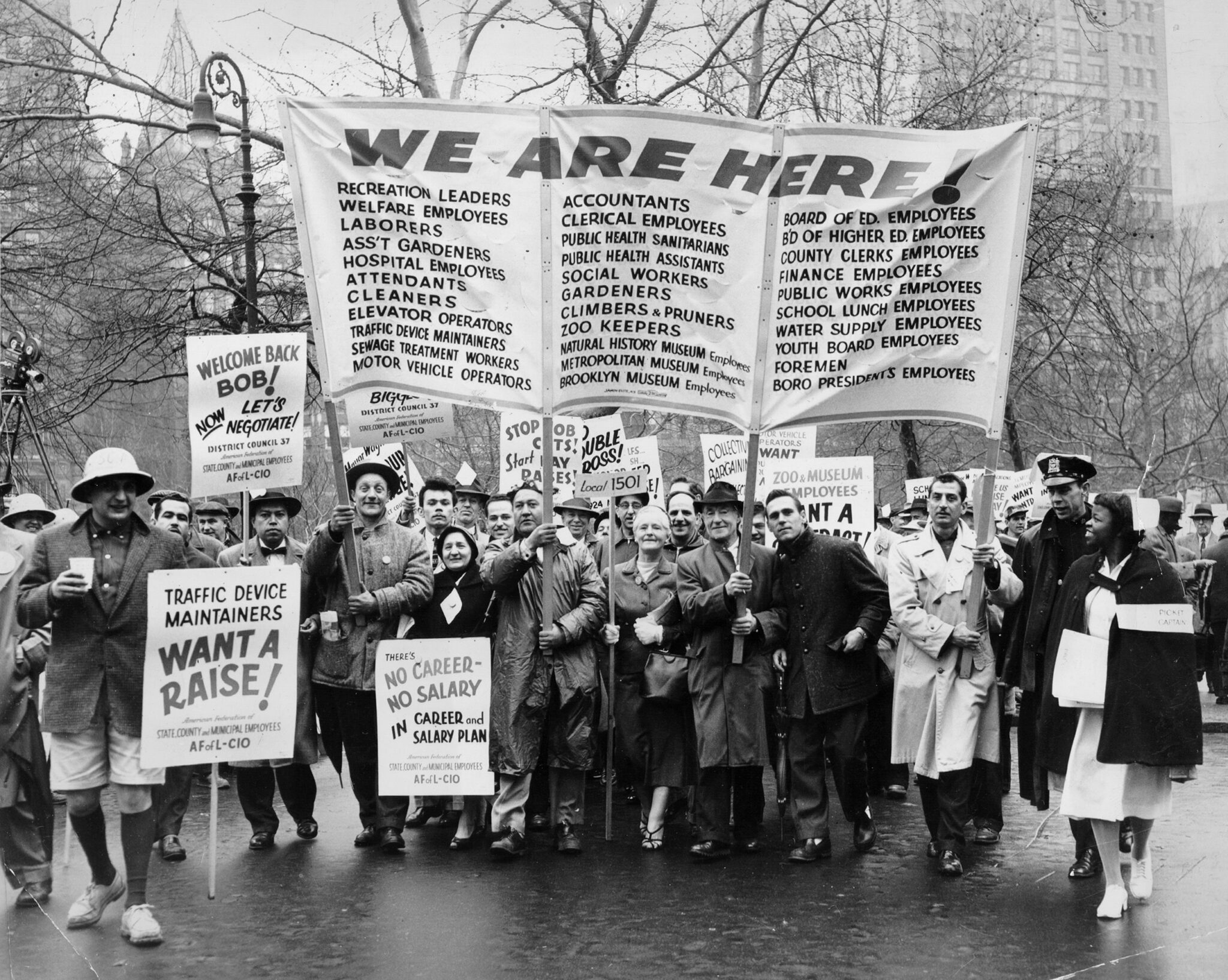
Municipal Workers Organize 1954
With nearly 400,000 workers, New York City is one of the largest employers in the nation. A great number of these municipal employees belong to unions. Although the Wagner Act gave most workers the right to organize, public employees were excluded, leaving them to use creative tactics such as this Bermuda Day demonstration aiming to force Mayor Robert F. Wagner (son of the senator who wrote the NLRA that bears his name) to bargain with public employees. Upon returning from a vacation in Bermuda right when collective bargaining was to start, the mayor was greeted by large numbers of public employees, many of them waving Bermuda onions. AFSCME DC37
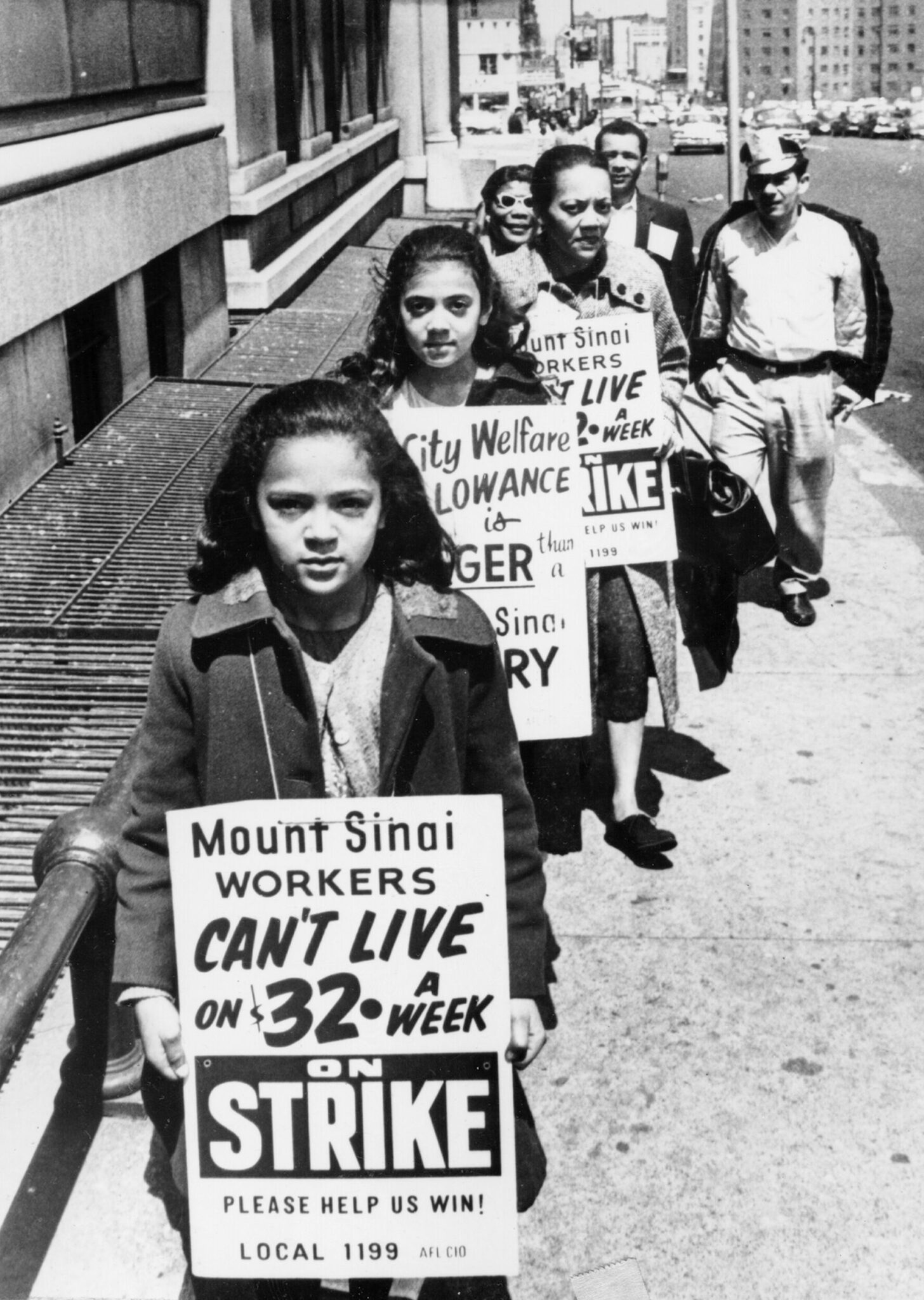
Hospital Workers Unite 1959
The hospital workers’ union led massive campaigns to organize all the workers at NYC hospitals in the 1950s—from the professional workers (pharmacists, nurses) to low-paid support staff, who were mostly Black and Puerto Rican women. The 1959 strike at Mt. Sinai Hospital won militant support from the young women workers who pushed the surging organizing drive forward. The union went on to organize professional and technical workers and became one of the largest unions in the city.Local 1199 Health and Hospital Workers
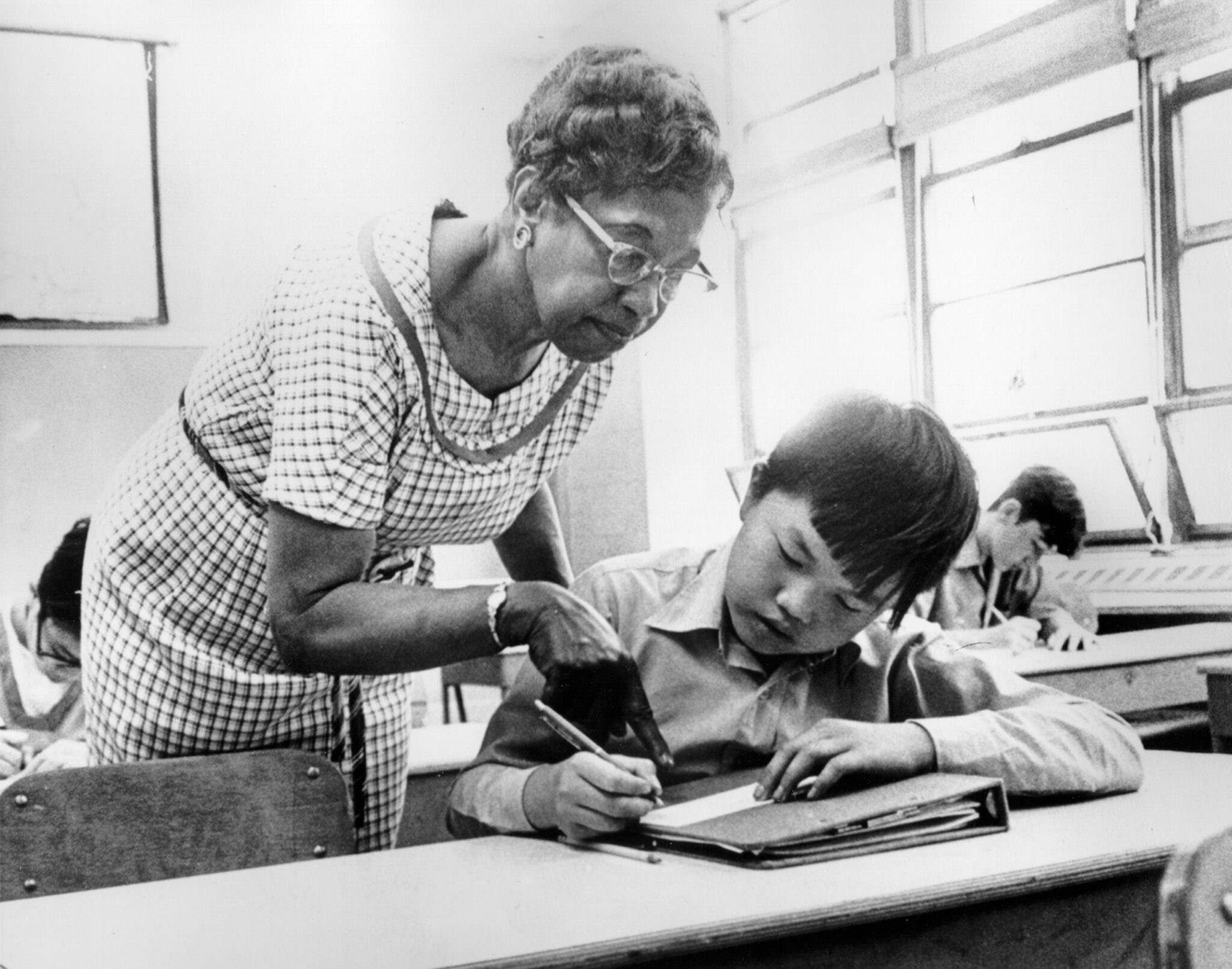
Public School Teacher and Student 1968
The largest school system in the nation, NYC public schools have more than a million students, and more than 40% of them are from immigrant families. The system currently translates forms and documents into Spanish, French, German, Russian, Chinese, Japanese, Korean, Hindi, Telugu, Bengali, Urdu, Persian, Arabic, and Haitian Creole. Teachers have been organizing since the 1930s for better pay and benefits, and for smaller class sizes and more resources for students. Teacher Ben Occhiogrosso recalled, “I started in 1956 at $4,000 a year. And my mother wanted to know if this was why I had gone to college.” Recent teacher strike waves across the U.S. won broad community support, with demands for better pay and for increased government funding for public schools.Sam Reiss collection, Robert F. Wagner Labor Archives, NYU, photograph by Sam Reiss
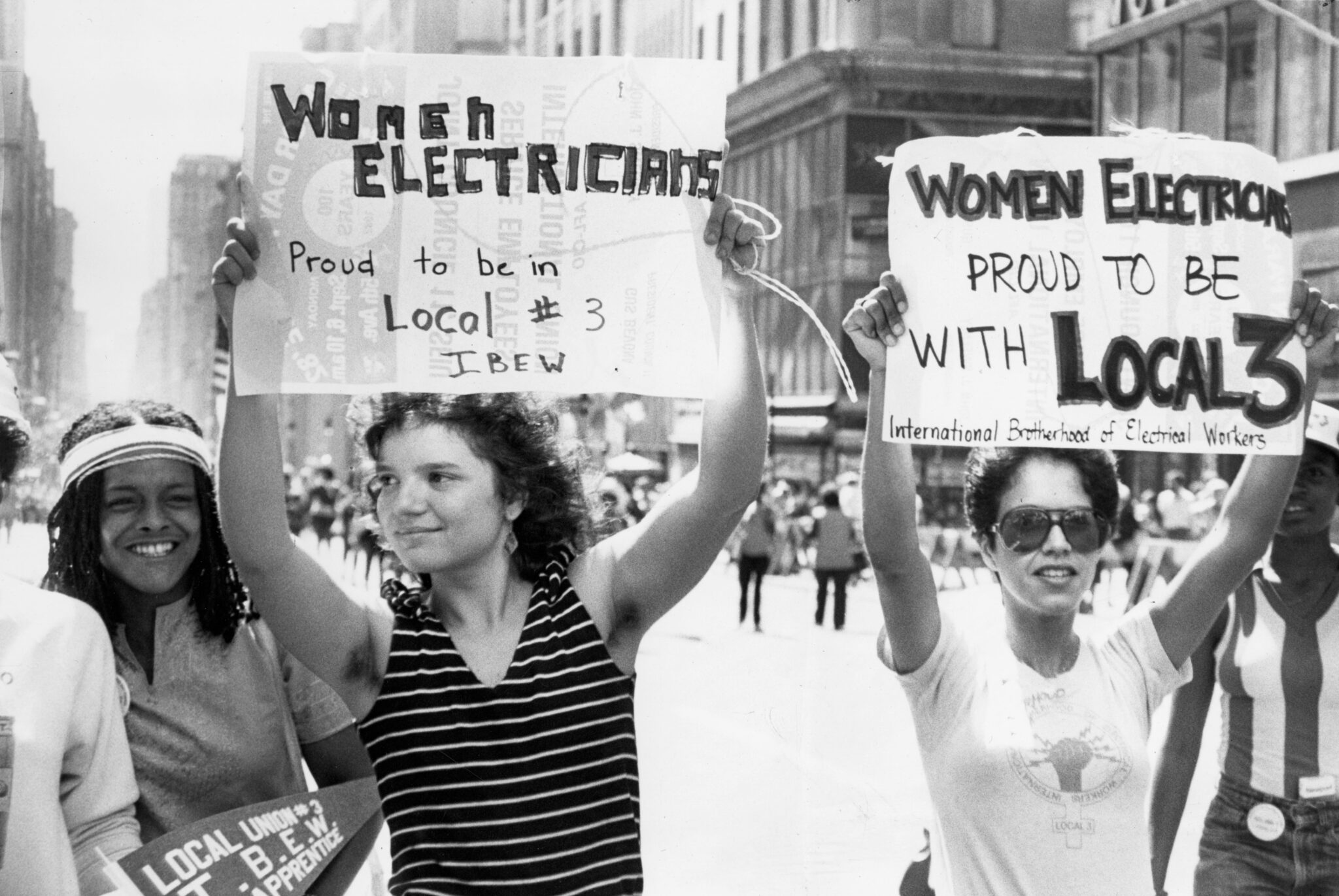
Women in Non-traditional Jobs 1981
Good pay in union construction jobs inspired women to work hard to get jobs that traditionally had not been open to them. The Coalition of Labor Union Women (founded in 1974) and other advocacy groups opened doors for women in the trades, though their numbers remain relatively small. These women electricians are marching in the NYC Labor Day parade, a precursor to a march in Washington, DC—Solidarity Day, September 19, 1981, when more than 400,000 union members and supporters demanded jobs, justice and human rights improvements.NYC Central Labor Council collection, Robert F. Wagner Labor Archives, photograph by Dan Miller
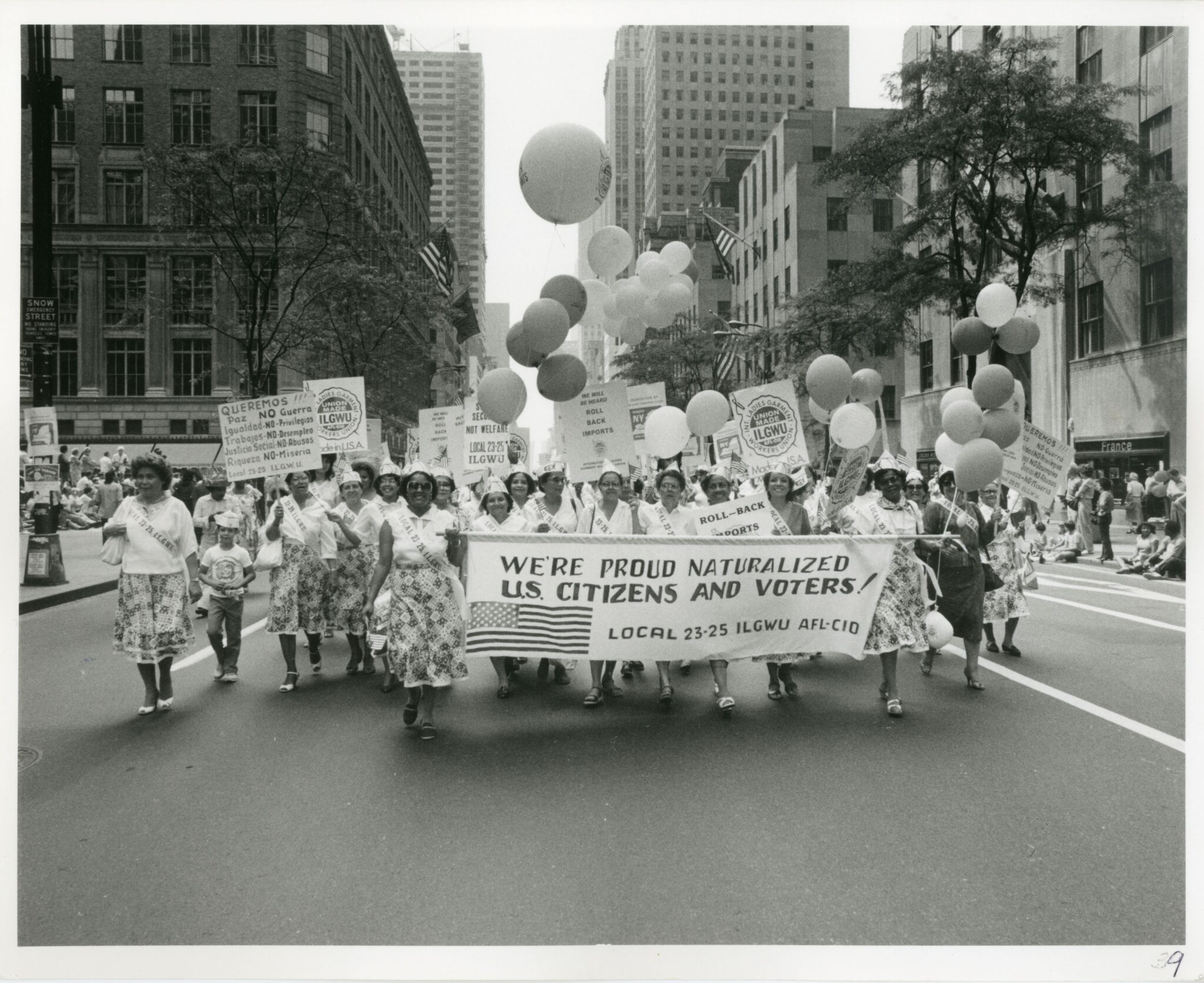
Union Members Vote! 1980s
Marching in the annual Labor Day Parade in the 1980s, ILGWU garment workers wearing colorful “union label” skirts show their union pride as new American citizens who registered to vote. Immigrants have always been a core strength of the Labor Movement, and voting is a core value and duty of union membership. The signs read: We’re proud naturalized U.S. Citizens and Voters!ILGWU Archives, Kheel Center, Cornell University, photograph by Jorge Colon
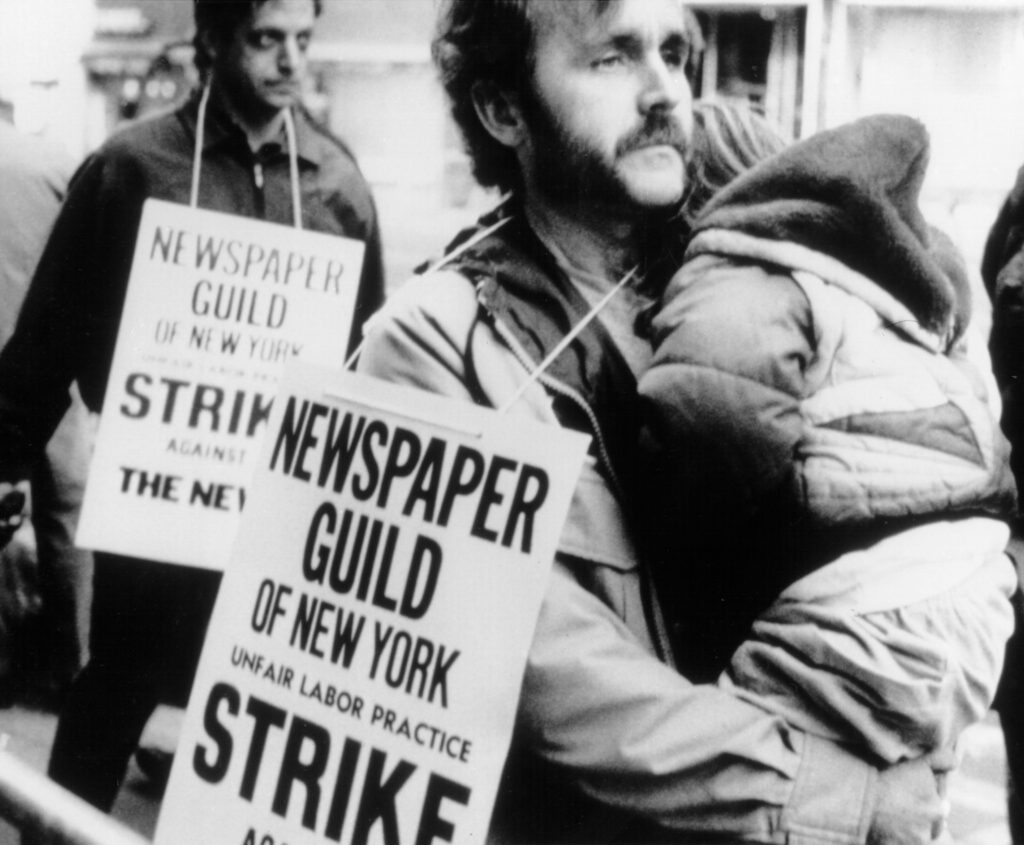
Daily News Workers on Strike 1990
Drivers, printers, journalists and all the workers who contribute to putting out a paper united in a strike that lasted 146 days. They were angry at the owner’s refusal to bargain, the hiring of replacement workers to write the nation’s third-largest paper, and the attempt to use homeless people to distribute the paper. NYC showed it was still a Union Town when newsstands refused to carry the paper during the strike. While the partial victory of the strike was soon overshadowed by the decline of the once dominant printed newspaper industry, today, writers and journalists including those in the growing digital media sector are part of the resurgence in labor organizing.Strike support slide show, Newspaper Guild Local 3
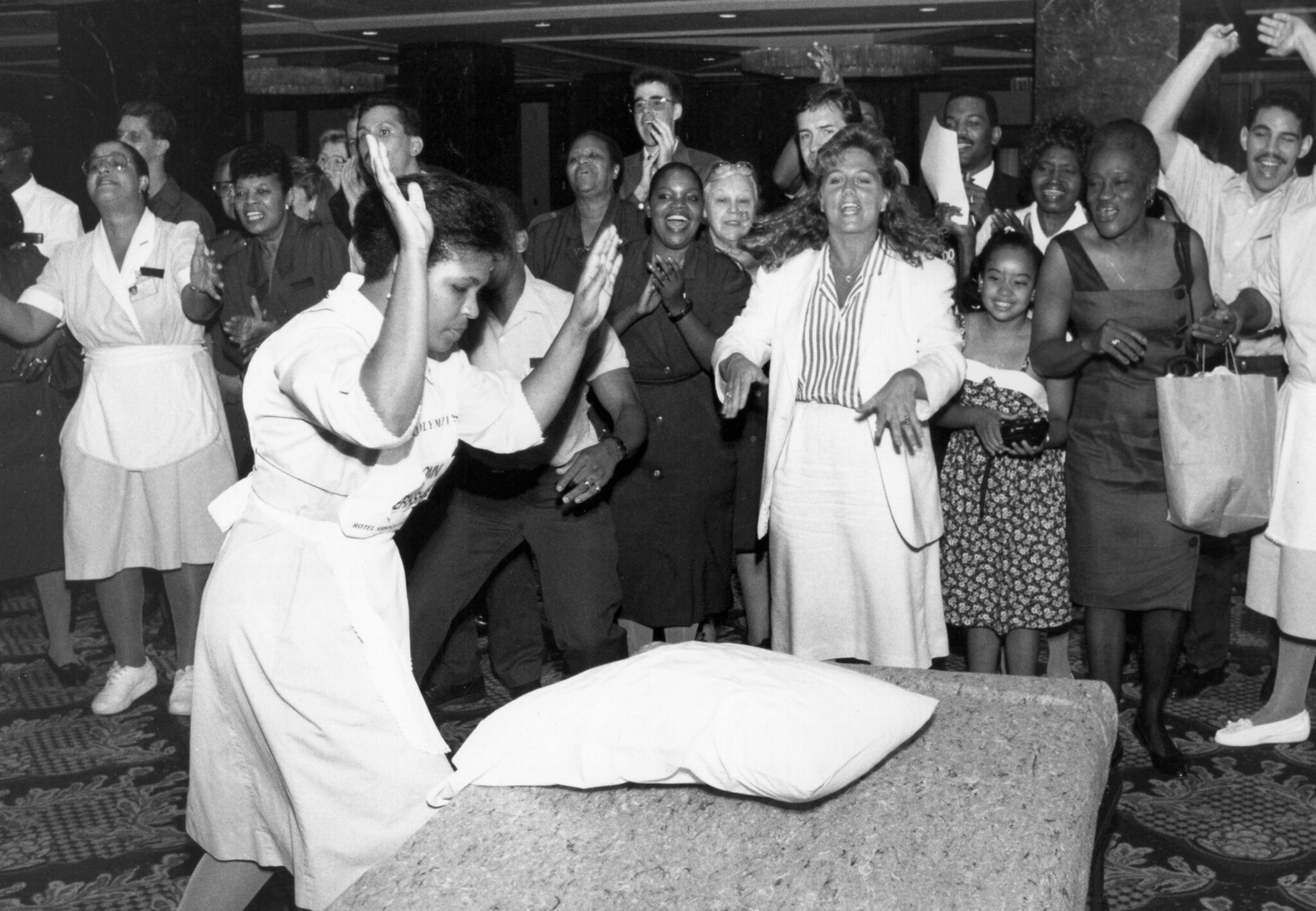
Hotel Housekeepers Show Their Skills 1993
The union makes a huge difference in the lives of hotel workers who are members, and also has a positive influence in non-union workplaces. All workers, especially women and immigrants, enjoy job security, good pay and benefits in New York City’s union hotels. Workers participate in union activities in their communities as well as on the job. Yearly skills contests allow hotel housekeepers across the city to show their workplace pride in competitions such as this spirited bed-making contest.Local 6, Hotel, Restaurant and Club Employees
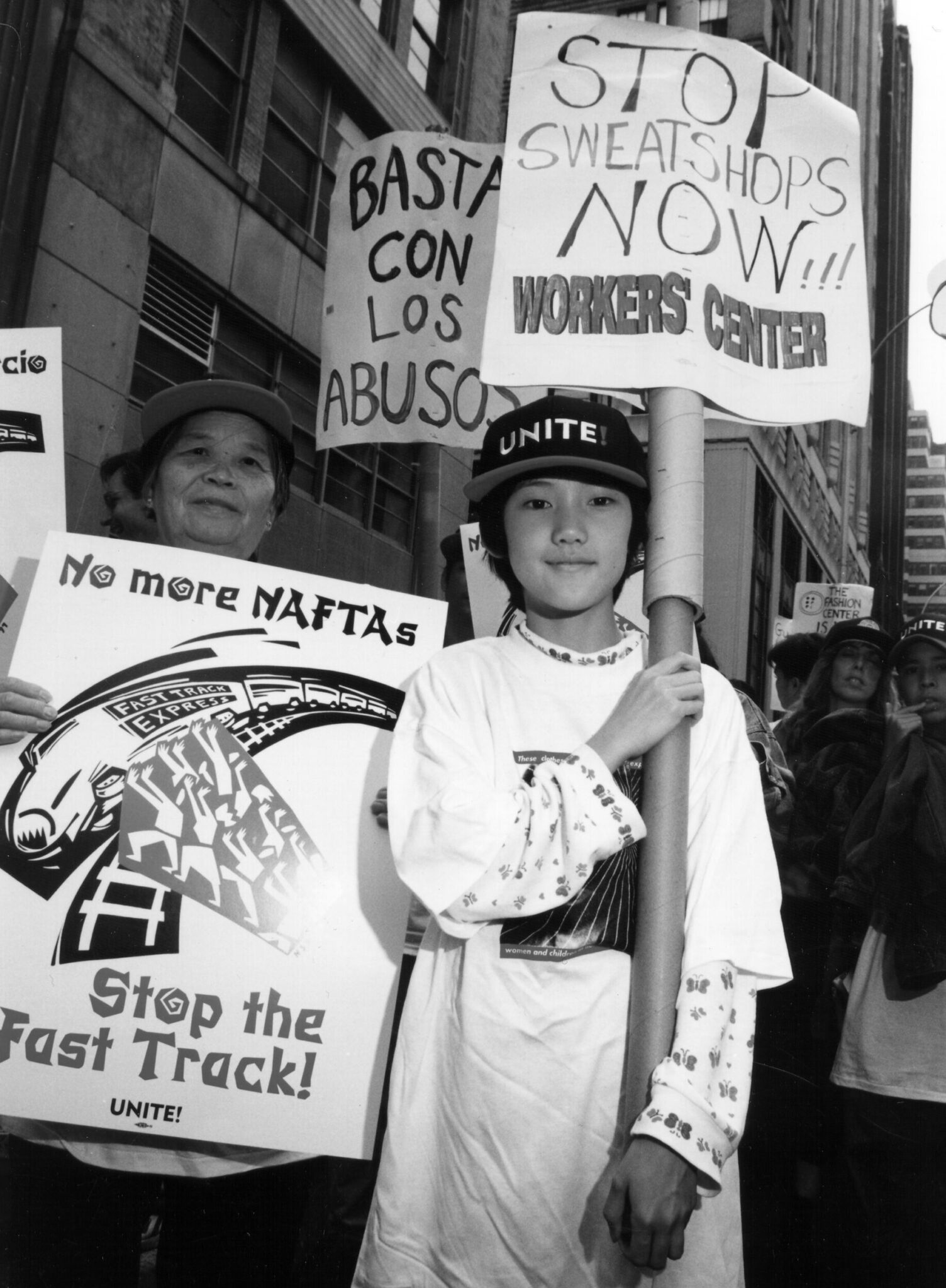
Political Action and Globalization 1997
Union members and their families take action to protest trade laws that are unfair to workers. Globalization led to the demise of thousands of production jobs in the NYC garment industry and other American manufacturing work. The Labor Movement actively engaged on the issue, with a tool kit including demonstrations, lobbying, advocacy, and mobilizing voters. Reaching well beyond wages and hours, the tactics are also deployed on issues ranging from workplace safety and health care to immigrant rights and education.UNITE!/Union of Needletrades, Industrial, and Textile Employees, photograph by Gary Schoichet
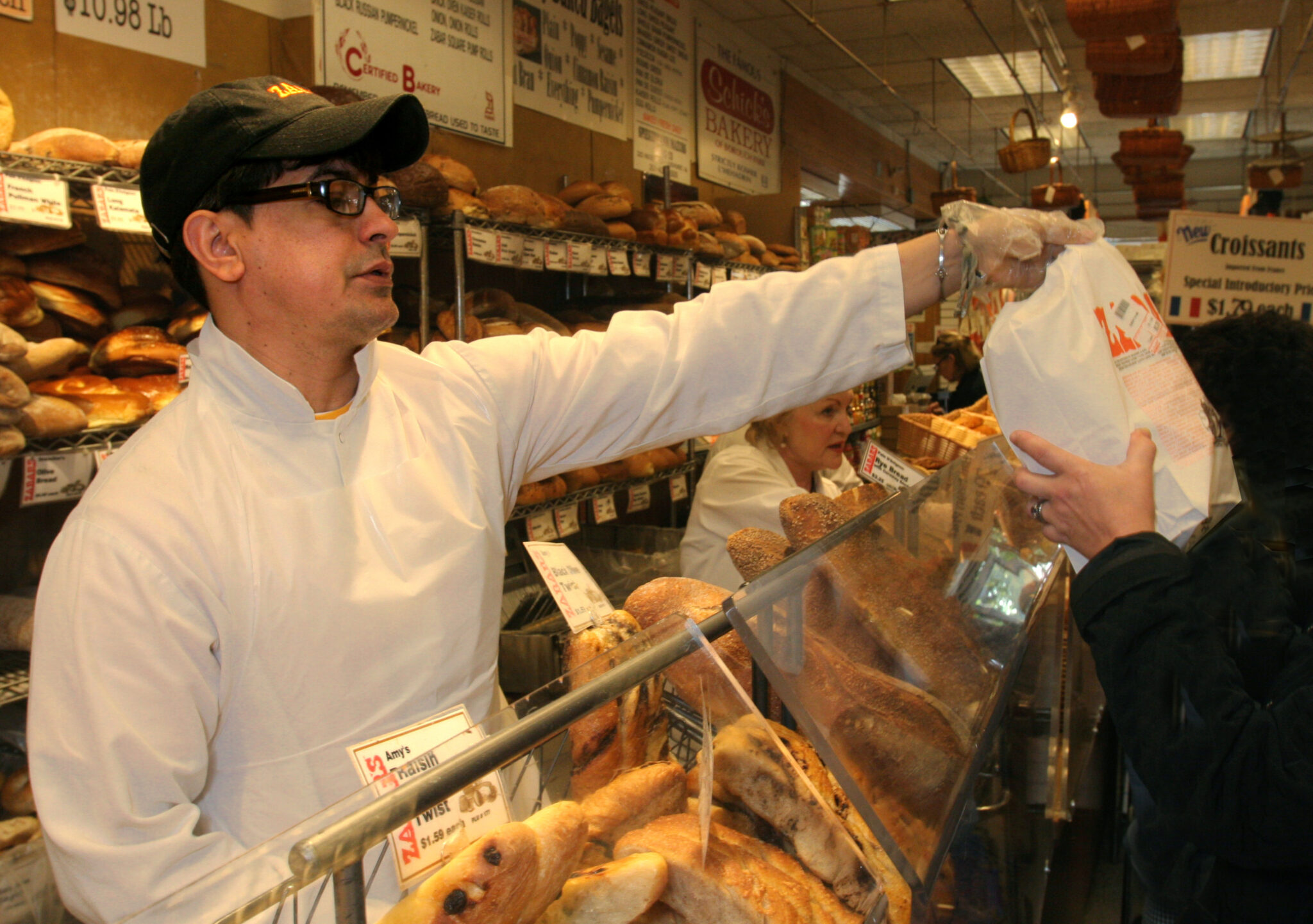
Service with a Smile circa 2005
Did you know the workers at markets like Zabar’s are long time union members? A wave of “retail food unionism” in the 1960s led to an upsurge in union membership in grocery stores and markets, providing a career path and good, stable jobs for the workers. By 1984, 84% of grocery workers in NYC were union members. Recent decades have witnessed the challenges of company consolidations, online retail, and huge retail corporations operating non-union. Still, this union worker shows pride and dignity in serving his customers iconic NYC bagels and smoked fish.RWDSU
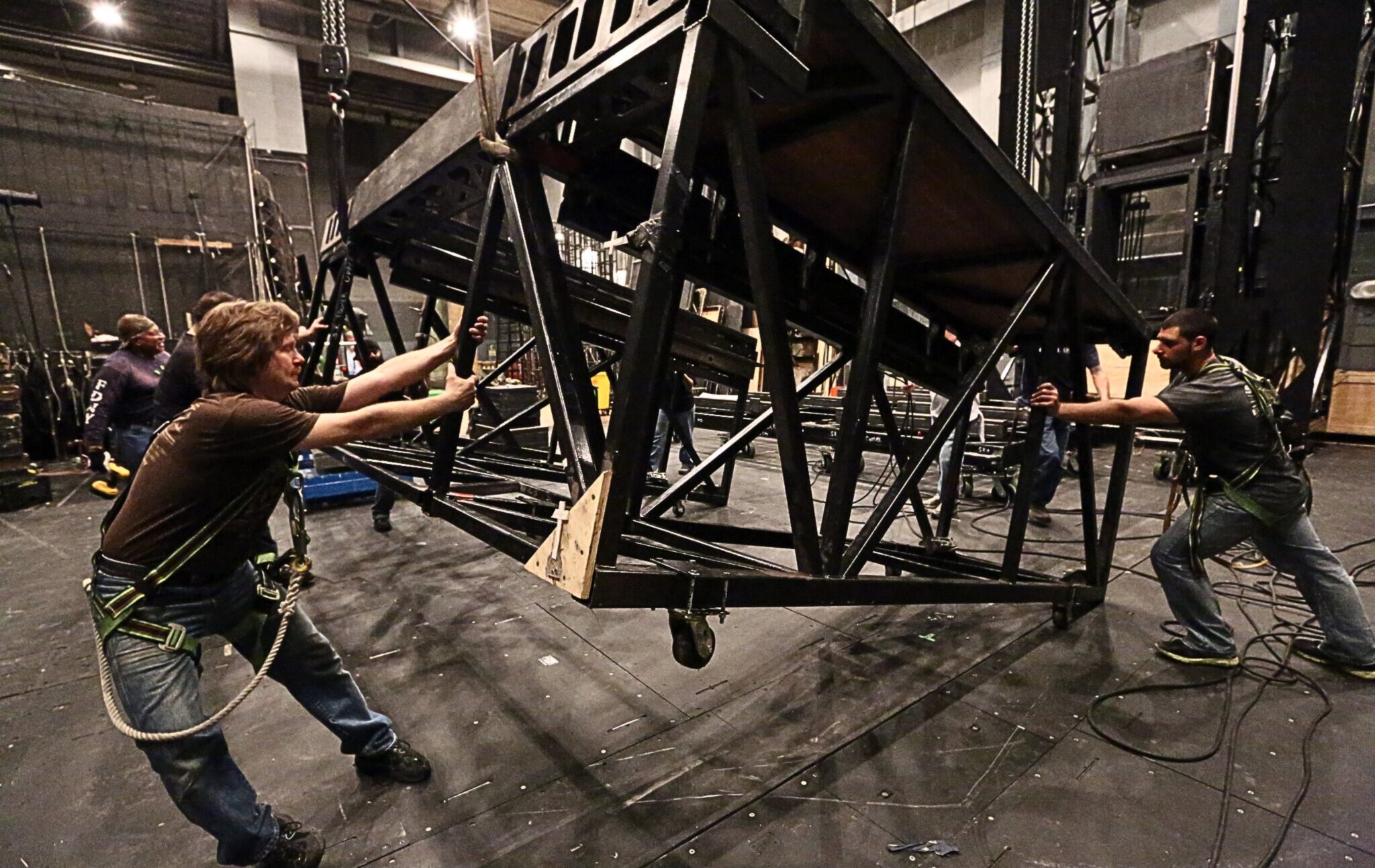
Setting the Stage 2012
The culture industry fuels New York’s economy. Theaters on and off Broadway employ a wide array of skilled workers, and attract tourists who stay in hotels, eat in restaurants, shop in stores and ride in taxis, subways and buses. Funds spent on the arts, culture and entertainment have a “multiplier effect” because of the affiliated industries that benefit from the activities of performers, patrons and audiences. Behind the glitz and drama, thousands of union members make sure the show will go on, like these stagehands moving sets at the Metropolitan Opera.IATSE Local One, photograph by Mike Terpstra
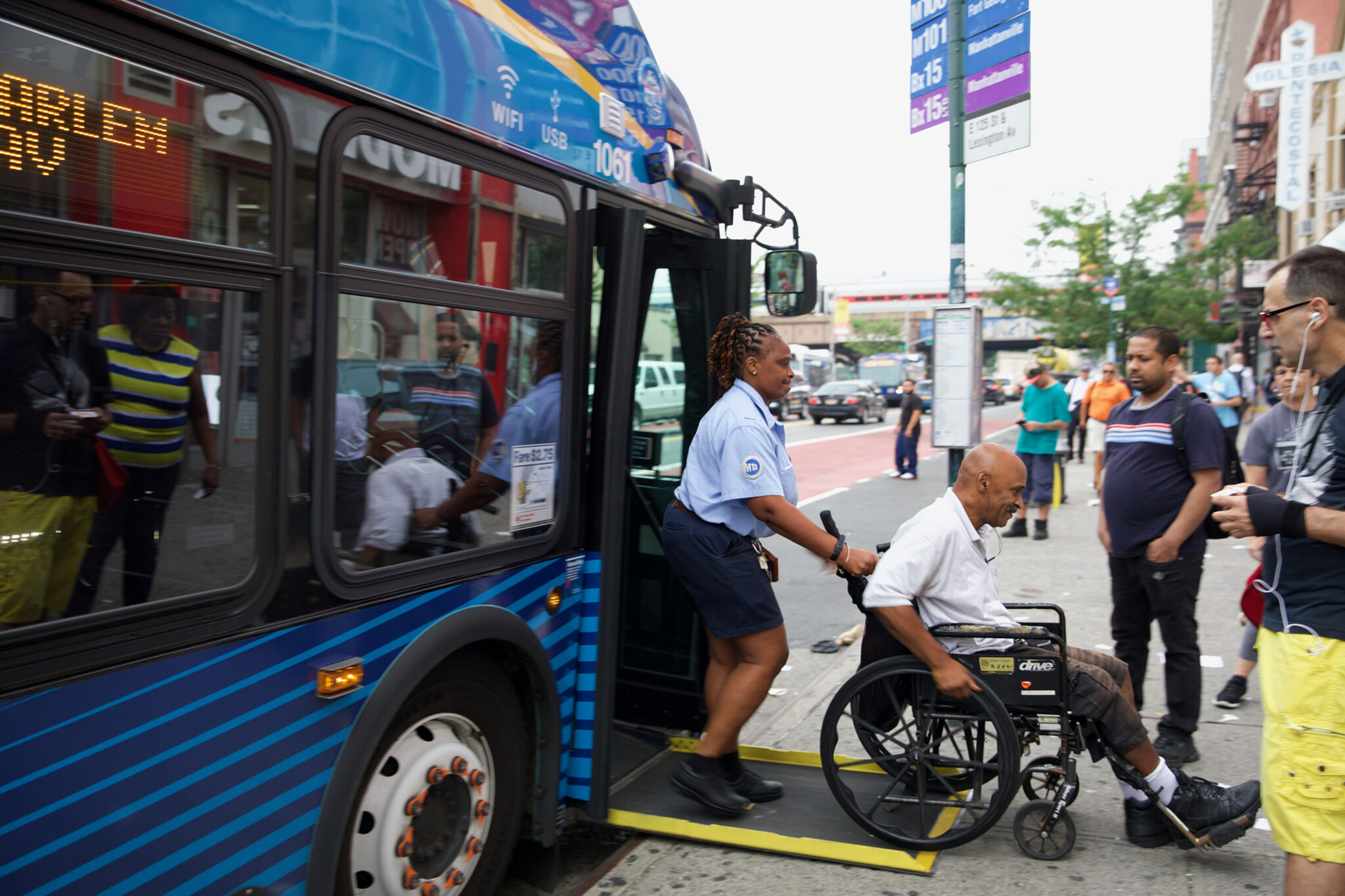
Transit Workers Serve All 2019
Low wages and long hours led city transport workers to form a union in 1934. An average week for a trolley-car operator, for example, could be 65 -70 hours - seven days a week or about 10 hours a day. Organizing helped, and by 1966 hours were improved, although the average wage was below the federal poverty guidelines for a family of four. A lot has changed. Wages are considerably higher, and women, Latino, Black and Asian Americans have job opportunities. Accessible buses like the one shown here are part of the ongoing monumental effort to bring a century-old transit system into compliance with the Americans with Disabilities Act of 1990.Transport Workers Union Local 100, photograph by Noah L. Rodriguez
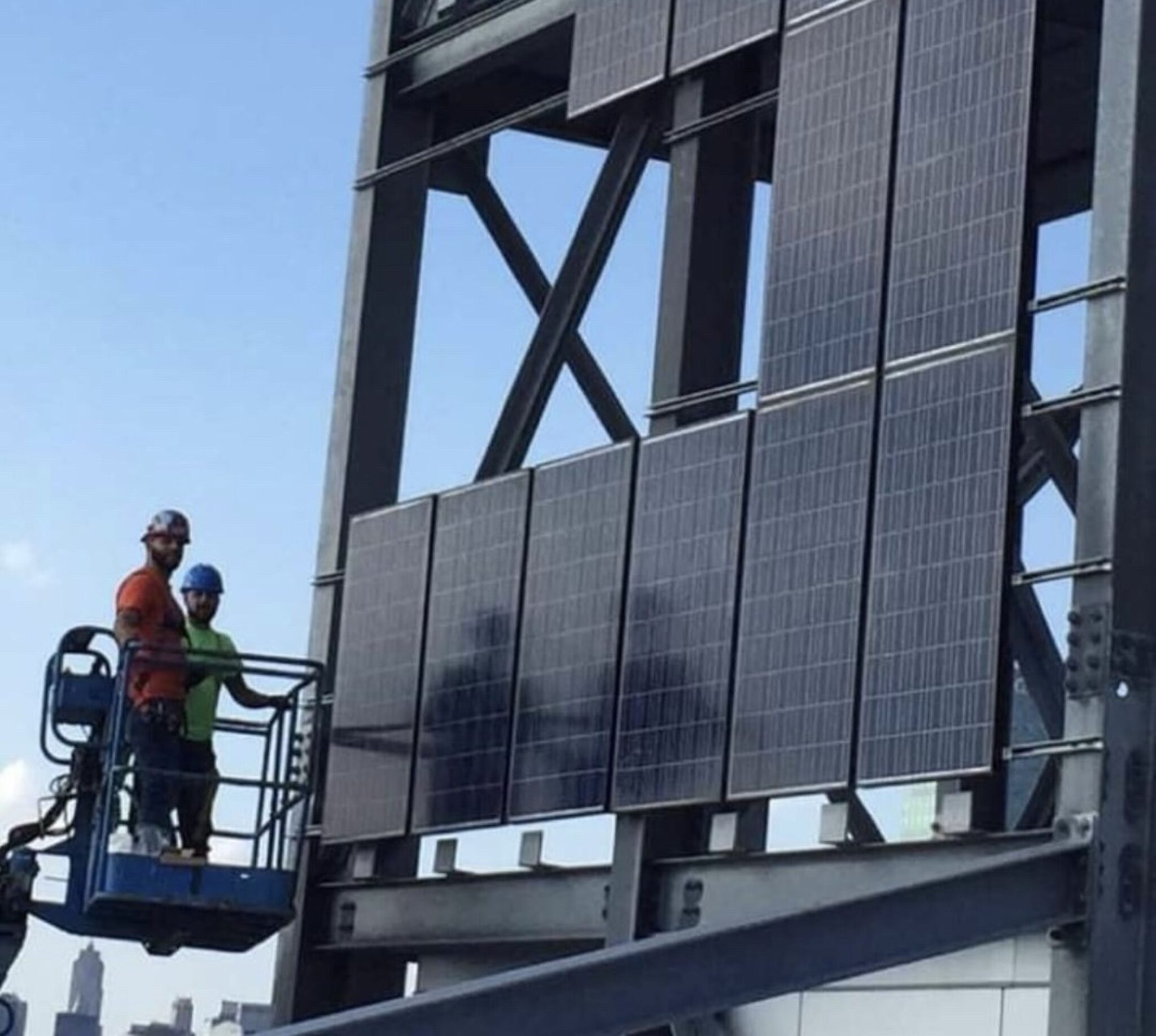
Labor and the Clean Energy Economy 2018
Responding to the urgent issues of climate change and inequality, green technologies like these solar panels have garnered support from labor activists and many unions. Jobs in the new sectors continue to increase, and union training initiatives are key. Unions and workers are rising to the challenge of creating good jobs with strong labor standards and adapting to new technologies and environmental concerns that demand changes at work.Local 3, IBEW, photograph by Justin Savignano
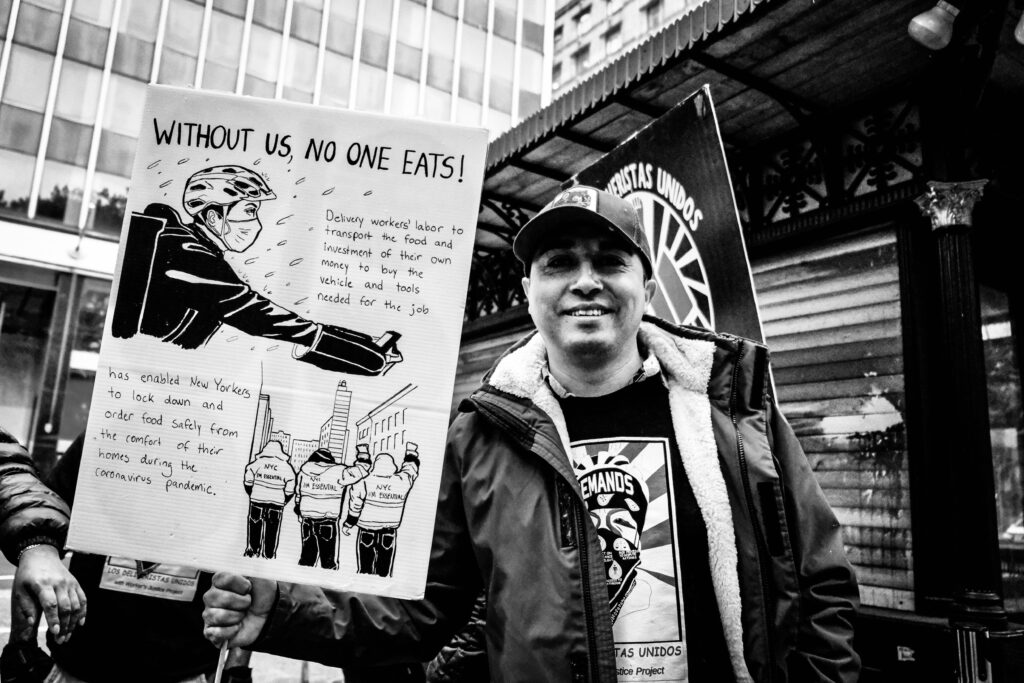
Deliveristas are Essential Workers 2021
Thousands of NYC workers hold jobs in the growing “gig economy,” doing everything from delivering groceries and food to driving car services to providing tech support. Customers and communities could not function without them, though the workers are far too often invisible and unappreciated. During the COVID-19 pandemic, City residents cheered the “essential workers”—such as delivery workers who made it possible to order food during lockdown—but their pay was usually far below a living wage. Labor laws do not allow them to unionize, but the Labor Movement supports partnerships with gig worker organizations.Worker’s Justice Project, photograph by Kate Godowski
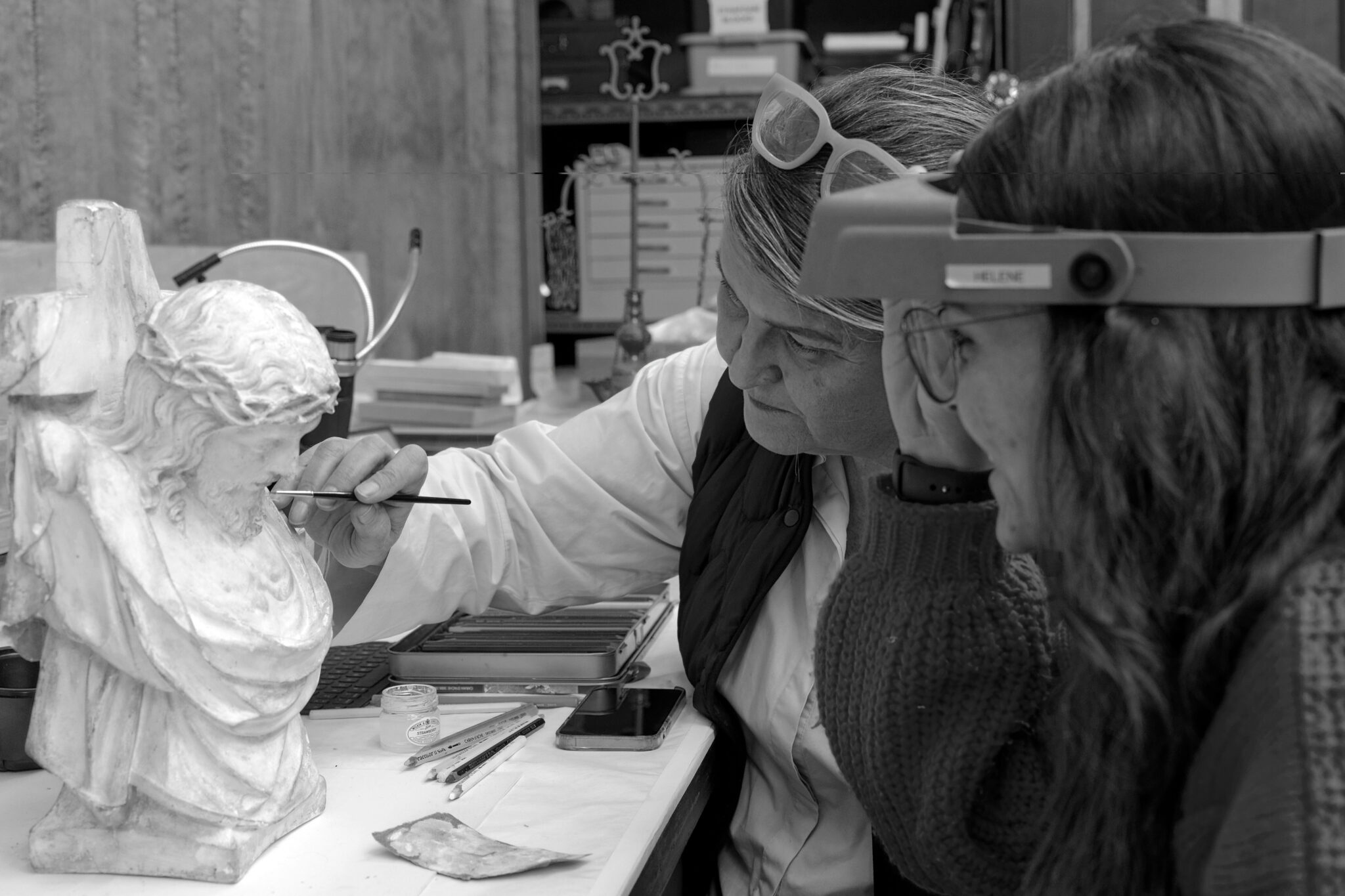
Museum Workers Unionize 2024
Skilled professionals like the painting conservator at the Hispanic Society Museum (shown here demonstrating work to an intern) who had long thought they didn't need unions have realized that solidarity is essential. She and her fellow museum workers are now part of a wave of organizing in white collar jobs in publishing, museums, and elsewhere where unionization has until now been rare.Technical, Office and Professional Union, UAW Local 2110, photograph by Patrick Lenaghan
Acknowledgements
Schedule a viewing of the exhibit at 350 West 31st Street by emailing info@NYCCLC.org.
Sign up for the weekly newsletter Union Matters.
Online captions are updated to reflect new information.
Exhibit curators:
Rachel Bernstein, May Ying Chen, Kate Whalen
Exhibit design:
Elizabeth Post-Marner (Spacesmith) and Dylan Jhirad (DBB/Page)
Exhibit images:
ILGWU Archives, Kheel Center for Labor-Management Documentation and Archives, Cornell University, Tamiment Library and Robert F. Wagner Labor Archives, New York University Member unions of the New York City Central Labor Council.
Many of the images appear in Ordinary People, Extraordinary Lives, A Pictorial History of Working People in New York City (NYU Press, 2000, 2020)
